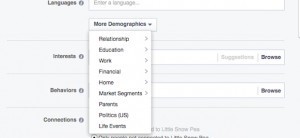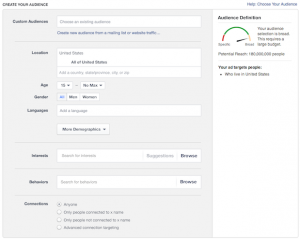Erik Qualman's Blog, page 609
March 8, 2014
Why customers write online reviews?

“One day you’ll discover that the opinions of worthless people are worthless.” This quote of Piers Anthony (“A Spell for Chameleon” feb, 2012) is the opposite of the digital reality. 70% of Americans say they look at reviews before taking the next step to conversion. (Jim Lecinski “Winning the Zero moment of truth”). In our socialnomic world, the importance of product or service social rating is essential. Peer reviews, friend reviews, are essentials in our online purchasing behaviors. The average consumer today checks 10.4 information sources before buying (“Social Trends Report 2012″, Bazaarvoice, June, 2012). When buying a computer at Best Buy, the salesman will go online and look at reviews with you to 1) complete his knowledge about the product and to 2) be sure you are making the right decision. Online rating has become the keystone of our buying decision.
One pending question companies still have is “why people rate”? Are they willing to be part of a community? Do they want to reward a company or be aggressive after a bad experience? Should I be afraid of ratings? A research conducted by Keller Fay Research in 2007 among 1,300 reviewers has shown that 90 percent write reviews in order to help others make better buying decisions. More than 70 percent want to help companies improve the products they build and carry. 79 percent write reviews in order to reward a company. 87 percent of the reviews are generally positive in tone. This study results have been confirmed with a Bazaarvoice study specific to the UK and confirm the J-Curve established in 2006 saying that 80% of reviews are positive.
As a conclusion, people post ratings to help both fellows and companies. In a future post, we will explore what is said on these reviews from a neuroscience perspective and why users make particular ratings. Meanwhile, go rate your last purchase, even if you bought it in a brick and mortar shop! Bazaarvoice’s research has shown that 66% of ratings on retailers’ websites are from offline buyers…
Laurent Donnier
[image error]
Businesses Investing More In Social Media-Based Customer Service

When companies pay special attention to providing customer service through social media, customers respond. Better yet, the public can see it. Social media-based customer service has become a popular way to improve the overall customer experience, as well as a brand’s reputation, and 2014 appears to be the tipping point for wide adoption of the practice.
What Is Social Media Customer Service?
Social media customer service is the practice of regularly addressing customers’ questions and complaints through social media networks, such as Facebook and Twitter. Many businesses operate social media profiles, posting and sharing updates to maintain an active presence, but providing customer service goes beyond that minimum activity.
To truly offer customer service through social media, a company has to do two key things: 1) monitor social networks for mentions of the brand, and 2) respond to those comments tactfully.
Social Customer Service Case Study: HostGator
HostGator – a leading international web hosting provider – offers the perfect example of a company who has realized that offering customer service through social media is essential for today’s web-connected consumers.
In July 2013, HostGator experienced a poignant revelation in social media. The company maintained an active social media presence, but remained closed to the idea of using Facebook as a customer service channel.
Zachary Chastain was the catalyst for HostGator’s change of heart. As he explained in his blog post, Chastain contacted HostGator’s social media manager, Sean Valant, and asked why HostGator had been deleting negative comments on Facebook. Chastain’s curiosity had been piqued when his friend left one of those now deleted comments.
HostGator’s response was interesting. According to Chastain’s blog, HostGator thought “that many of the upset customers they reached out to [via social media] in the past did not usually follow up with their suggested support channels, [and] as such, they did not always reach out to help customers with complaints.”
After his conversation with Chastain, however, Valant realized that HostGator’s customers really valued the concept of service through social media, and needed HostGator to adapt. Valant decided “HostGator would adopt a new policy of responding to 100% of complaints they received through Facebook.” Now, HostGator’s Facebook page is filled with comments, good and bad, undeleted and more importantly, answered.
So What?
HostGator’s publicly-discussed decision to open up Facebook as a customer service channel reflects an overall trend in consumers’ expectations. HostGator also represents the many other companies that are hesitantly changing their perspectives on social media customer service. Slowly or not, perspectives are definitely changing.
Telling Statistics:
Over the last year, the number of questions asked on Facebook business pages increased by 85%. (Social Bakers)
71% of consumers who experience a quick response on social media are likely to recommend that brand to others, compared to just 19% of customers who do not receive a response. (Social Media Today via NM Incite)
Customers end up spending 20% to 40% more with companies who engage and respond to social media customer service requests. (Bain & Company)
80% of small businesses increased time spent on social media in 2013 as compared to 2012. (Social Media Today)
In 2013, businesses improved their social media customer service response rate on Facebook to 62% from just 5% in 2011. (Social Bakers)
If you read those statistics from top to bottom, I think you may come to the same conclusion I did. Businesses invested a lot more in social media customer service in 2013, and they plan to invest even more this year. This is due to an increasingly reliable ROI for businesses who do choose to provide social media customer service.
How to Serve Customers via Social Media
Companies that want to take advantage of consumers’ interest in social media customer service need to do the two basic things that comprise the practice, monitoring and responding to comments about the brand.
Social media monitoring, also called “listening”, is typically accomplished with one or more social media monitoring tools, which include Tweetdeck, SproutSocial, HootSuite, and more. Whether your business chooses to use a monitoring tool or not, monitoring social media networks for mentions of your brand can help you manage the overall customer experience and improve your online reputation.
Responding is the other half of the puzzle. As HostGator learned in 2013, customers who post comments about a brand want to be heard. The only way they know you hear them is if you respond; this is why monitoring is so important. Respond to all comments that come in, and do so in a tactful way. Google Alerts is a great way to monitor mentions of your brand across blogs and other sites aside from just social media channels. It’s even better to respond to more obscure mentions of your company that may be hard to find without listening tools.
With these two key strategies, businesses can transform their basic social media performance into useful customer service opportunities that both increase customer loyalty and improve the brand’s online reputation.
[image error]
March 7, 2014
Being More Social With Aging Parents

 Just when you think you’ve got it all figured out, something new comes your way.
Just when you think you’ve got it all figured out, something new comes your way.
Maybe you’ve got your teens all set – an idea of college, maybe even some money tucked away and you feel great. Then you realize that your aging parents need some help. They are on a fixed income and need some guidance in creating a budget, and guess what- you are the one to help them.
But do you really know how? Maybe not, but there is help for you out there.
Social Networking
Take a look online and check out some social sites that may be able to offer you just what you’re seeking.
AARP is always a go to for older adults.
This site offers information about various money matters for seniors, and it would be helpful for the children who are helping in the planning stages to take a look at some of these tools. The National Council on Aging is also a good place to find resources for the whole family.
If you are looking to go beyond Internet information and get active with communities, jump on these organizations’ Facebook pages.
Here you can interact with those in similar situations, find links to good information, share and read stories and stay active in a community without leaving your home. Because social media promotes interaction and conversation, you can pose questions regarding your parents’ financial budgeting and get some real life feedback.
Twitter is also a great place to find lots of helpful information regarding anything you want.
Instead of browsing a search engine and weeding through article after article, search on Twitter. You can go through your favorite feeds or search through something like #agingparentbudget. You may be surprised how much reputable and helpful information you can find.
How to create a budget for aging parents is different than creating your own budget, and you probably need some help. Other media can help you, like Mint.com and marketwatch.com. Most of these sites have their own social media that you can follow as well.
Just like you sat down and planned out college savings or even how you’d pay for dance class or tutoring for your child, you need to sit with your parents and/or a financial advisor to figure out their finances.
As time goes on, they may become unable to make good financial decisions, and it’s smart to have a head start on all of it before that time comes.
Know the Financial Situation
You need to know their financial standing and other important concerns:
• Debts
• Investments/assets
• Documents
• Power of attorney
• Retirement
• Estate planning
• Medication and health care plans
This probably won’t be a joyful task because not only is it one dealing with money, but also the reality of your parents aging and losing the capabilities they once had.
Roles are reversed and it can be tough. Planning though, can make it a smoother transition.
Using social media to help get you all through this may sound surprising, but the wealth of information it can offer may be just the thing to make this a little easier.
Photo credit: lifebridgesolutions.com
[image error]
March 6, 2014
Should Your Business Use Facebook, Twitter or Both?

Before the advent of social media, businesses reached customers through traditional advertising.
Ads on television and in magazines provided the bulk of customer interaction outside of face to face meetings. Word of mouth was the old style of social advertising.
Social networking is similar to word of mouth advertising, only on a global scale. Information moves lightning fast on the Internet. What is posted on Twitter or Facebook can go viral in minutes.
A particularly good campaign can bring in new customers around the world.
Between the two social media giants, which is better for your business? Could it possible that using both will be the best bet?
Facebook (Reportedly more than one billion users, some 13.5 million followers on Twitter as of March 2014) is the one site in the world that has the most ‘hits’.
It is viewed millions of times a day by millions of people. For social marketing purposes, Facebook is an amazing tool.
Unlike micro-blogging, Facebook allows you to post videos, long updates, run campaigns and events, plus pay for promotion. Advertising is easy, plug in the amount of money you’d like to spend on ad placement per day and watch the ‘likes’ roll in.
Customer service integration is also easy.
People that like a business page can send messages with questions, or post on the timeline of the page. This public customer service gives you a chance to let your customer service skills shine.
There are negative aspects, but even negative comments can be addressed in a way that allows others to see you care about customers.
Event creation is a great way to bring customer’s attention to an event you are planning or that is in progress. Customers can choose to ‘join’ the event, participate, and even donate time or goods for charity events.
Interaction on Facebook is more personal than on some social sites which is a great tool for engaging audiences.
Twitter (Reportedly more than 200 million users, some 29.2 million followers as of March 2014) is a form of social networking known as micro-blogging.
People can post short updates up to 140 characters. Their followers can interact by ‘favoriting’ tweets, retweeting, and tagging tweets with hashtags.
The beauty of using Twitter for a business is that thousands of people can share your message in an instant. Interaction is similar to instant messaging, only with a potential audience of thousands or more.
As with Facebook, Twitter can be a place where customer service is showcased. The limit of characters in messages and tweets can put a damper on this, though.
Using Twitter and Facebook together is often the best choice for business.
Not every person that has one account will have another on the opposite network. Forcing people to sign up for one social account just to monitor your information can drive away some customers.
If possible, keep up on both networks.
Their linking abilities allow your tweets to show up on Facebook while all statuses from both networks can be shared through a website ‘widget’. Whether you are promoting your marketing capabilities, advertising, , SEO or other online products and services, using both social networking sites can’t hurt.
Keep all of your customers or potential customers in the loop by taking advantage of two networks instead of one.
Photo credit: mbmagazine.com
[image error]
How Brands Define Their Personality Through Social Media

There’s nothing worse than a boring old brand spoiling your day by hijacking your otherwise (fairly) interesting news-feed. They turn up in their corduroy trousers trying to speak like a teenager whilst touting their products left, right and centre. Then there are the brands you love who don’t appear to have turned up to the party, you get the impression they’ll take your money but don’t want to hang out, cheers Apple! (It’s well documented that the world’s biggest tech company has avoided social media- relying on its fans and the rumour mill to generate their social buzz.) Then there are the brands that do social media really well; reaching fans through their passions, encouraging discussions and interacting across multiple platforms. Social media isn’t just a tool to sell their products- it’s the mouthpiece that helps define their brand, giving them a personality.
So who are these brands and how can we replicate their success?
Red Bull - Focus on the brand, not the product
 With it’s incredibly deep pockets and thirst for all things adrenaline inducing, Red Bull reaches out to people who have a ‘zest for life’ by producing high quality, aspirational content that pushes boundaries. Not content on producing original content across every major sports niche they have also diversified into other interest groups such as music and art. They’re a social media powerhouse delivering high quality content at a phenomenal rate with the ability to reach the world (literally) but also target people on a smaller scale. Red Bull are a great example of how a global company can remain cool, exciting and relevant, even if people don’t necessarily like their product.
With it’s incredibly deep pockets and thirst for all things adrenaline inducing, Red Bull reaches out to people who have a ‘zest for life’ by producing high quality, aspirational content that pushes boundaries. Not content on producing original content across every major sports niche they have also diversified into other interest groups such as music and art. They’re a social media powerhouse delivering high quality content at a phenomenal rate with the ability to reach the world (literally) but also target people on a smaller scale. Red Bull are a great example of how a global company can remain cool, exciting and relevant, even if people don’t necessarily like their product.
Boohoo - Encourage feedback
 Boohoo is an example of a fashion retailer who uses social media effectively to build interaction and engagement with their followers. What Boohoo do really well is that they encourage genuine discussion whilst opening themselves up for potentially negative responses. Their ‘LOVE or LOATHE’ posts encourage unadulterated feedback which, according to Boohoo, is to encourage a two-way conversation so it’s not just about talking at their fans:
Boohoo is an example of a fashion retailer who uses social media effectively to build interaction and engagement with their followers. What Boohoo do really well is that they encourage genuine discussion whilst opening themselves up for potentially negative responses. Their ‘LOVE or LOATHE’ posts encourage unadulterated feedback which, according to Boohoo, is to encourage a two-way conversation so it’s not just about talking at their fans:
“Interaction is key to us developing the Boohoo brand. We have a small team that work on our social media, they all live and breathe the Boohoo philosophy and understand how we interact with our audience. We make sure we’re delivering what our customers want through listening and reacting to their needs.”
O2 – Effective crisis management
 With the immediate and viral nature of social media comes the risk of hashtag-triggered PR disasters, leaving brands vulnerable and exposed at all times. How brands handle their communication following a crisis will dictate whether they walk away unscathed or damaged beyond repair. O2’s blackout in 2012 caused distress to millions of customers in the UK and sure enough the negative social media storm began. Their initial response was to try and reply to all of the individual complaints with formal apologies but as the outage continued and complaints increased, O2 had to change their approach:
With the immediate and viral nature of social media comes the risk of hashtag-triggered PR disasters, leaving brands vulnerable and exposed at all times. How brands handle their communication following a crisis will dictate whether they walk away unscathed or damaged beyond repair. O2’s blackout in 2012 caused distress to millions of customers in the UK and sure enough the negative social media storm began. Their initial response was to try and reply to all of the individual complaints with formal apologies but as the outage continued and complaints increased, O2 had to change their approach:
Customer (@MrJeb): “Oi! O2! Because of you I missed a call from my dear old mum. For that I think I owe you a pint. Ta!  ”
”
O2 response: “Um… you’re welcome, we think. But if your mum asks, we’ll totally deny this tweet”
Customer (@grahamcummings7): “@O2 F**K You! Suck d**k in hell”
O2 response: “Maybe later, got tweets to send”
It was a risky strategy but it worked with many customers enjoying the humour of O2’s responses and tweeting about how well they’d managed the crisis. They turned a crisis into a PR stunt and their reputation was quickly restored once the network was back up and running.
What we can learn
Social media platforms are designed for human interaction and so it’s inherently hard for companies to gain trust and get people to interact with them. Red Bull have showed us how to engage fans through delivering content based around their passions and how diversifying into new content areas can help you find new fans and increase relevance to your existing followers. Boohoo have showed us how to create conversations and how impartiality is vital for effective interaction, they also remind us that social media provides the perfect platform for feedback which is essential for developing a brand. Finally O2 showed us that the human approach works in times of crisis, don’t be afraid to tear up the corporate guidelines and talk to people on their level. All the examples above come back to one thing – make sure you show your personality!
[image error]
Facebook’s New Targeting Options: A Primer for Businesses

Facebook is giving businesses new options when it comes to targeting the social network’s one billion users worldwide. The new core audience targeting includes deeper options inside the four basic Facebook targeting choices: location, demographics, interests and behaviors.
Facebook’s appeal to marketers is its ability to reach not only extremely large groups of people quickly, but also its ability to drill down into those groups and specifically target different audiences with tailored messages. Facebook can do this because of the massive amount of data it collects and holds on every user including everything from age and location, to which TV shows people watch, to the timing of life events like weddings or graduations. This type of audience targeting is why brands should have a social section of their advertising budget, it allows for a level of specification that transitional outlets like TV and radio can’t offer.
Location: Facebook has had location-based targeting available to brands for a long time, but now brands have more options that make it easier to create comprehensive campaigns. The new, flexible options allow marketers to build campaigns around combinations of locations. For example, if a business wants to send an ad to everyone in the state of Arkansas and San Antonio, Texas they can now do that. It is also now easier to exclude specific areas as well. Marketers can now send paid ads to everyone who lists Phoenix as their home, but can exclude people to live in the 85032 zip code, or everyone in France except for Paris.
Demographics: New options now available for businesses include targeted ads based on education level, job title and life events. For instance, B2B-based businesses can direct Facebook ads toward people who list themselves as CEOs, managers or marketing executives. At the same time, a business that wants to focus ads on college graduates, or even graduates or a specific college can now do that as well.

New Facebook Targeting Dashboard for Businesses
The life event options add a new element to Facebook advertisers. Until now, businesses that wanted to specifically target groups like a newly married couples had to use a series of assumptions that included indicators such as new likes. Now, businesses can specifically target someone who got engaged in the last three months or married in the past year. Businesses that could take advantage of this option include caterers that focus on weddings, furniture stores that cater to young couples and even mortgage companies that help people buy their first homes.
Interests: One of the most popular ways for advertisers to target Facebook users is based on their interests. Before now, if a business wanted to target everyone who enjoys fashion, they would have to research and select multiple interests like fashion shows, shopping and dozens of specific brands. Now, advertisers can simply choose a category, such as fashion, and Facebook will populate the fields automatically, reducing guesswork and time while still reaching the desired target audience.
Behaviors: Another new option for Facebook advertisers is targeting based on the devices they use and the products they purchase away from the social networking site. For instance, businesses can now target people who use a Motorola phone and bought shoes. This could be especially valuable for companies that spend money on retargeting. This feature can be accessed through Facebook’s Partner Categories, which is now being offered in the U.S.
Increasing Organic Reach with Page Tags
Another new announcement from Facebook will help businesses looking to increase their organic reach through the use of collaborations and celebrity endorsements.
Starting now, when one page tags another page in a post, it will be shown to people who like or follow both pages. Below is an example from Facebook. Before the change, the post would have only be shown to followers of the Bleacher Report. Now it will go to followers of Dwight Howard and James Harden in addition to Bleacher Report fans. If someone happens to follow all three, Facebook will see that as an indication that the post is extremely relevant to that user, making it more likely to be added to their news feed.

New Facebook Tagging
For marketers, this means new opportunities to create larger audiences for non-promoted posts. While a business may have thousands of followers, a celebrity could have tens of millions. A brand pairing up with someone like Dwight Howard has the ability to reach a much larger audience than that brand posting alone. The new feature only works between Pages, meaning the average Facebook user could not expand his or her audience by tagging a Page when posting.
Conclusion
Paid social advertising has the ability to influence very specific groups of consumers with audience specific content unlike traditional advertising. Facebook’s new targeting options allow companies to go after smaller groups in an easier and more efficient manner. The more specific an advertisement can be, in both targeting and content, the more effective it can be at delivering results such as clicks, likes and sales.
[image error]
March 5, 2014
Big Data in Education: Big Potential or Big Mistake?

When learners interact with content in your course, they leave behind ‘digital breadcrumbs,’ so to speak, which offer clues about the learning process. We’re now able to collect and track this data through learning management systems (LMSs), social networks, and other media that measure how students interpret, consider, and arrive at conclusions about course material.
The good news is that this information–called Big Data–can do wonders for personalized instruction, especially within the e-learning industry. The not-so-good news is that the rise of Big Data brings with it many risks and ethical dilemmas, all of which need to be addressed before we move forward with this new approach.
What is Big Data?
Big Data refers to the large amount of information that flows through various channels – usually online – each second. It’s data that is too large, complex, and dynamic for any conventional tools to capture and manage. The term originated in the open source community, where specialists were trying to find faster and more scalable solutions to store and process immense amounts of data. Thanks to advancements in technology, this data can now be interpreted and analyzed, providing great benefits to the healthcare, government, retail manufacturing, e-learning, and other data-driven industries.
What makes Big Data “big” (both in size and significance) is that it allows for the analysis and prediction of behavior across a huge variety of demographics, personal backgrounds, learning styles, thinking processes, IQ levels, academic intentions, genetic predisposition, environmental factors, skills, potentials–anything you can think of measuring.
In education, these data points are now being used to help design instructional strategies, evaluate the impact of these strategies on both students and teachers, fuel an evidence-based approach to experimentation, and create personalized learning environments.
The term “Big Learning Data” encompasses three aspects of learning data: volume, velocity, and variety. [Editor's Note: Check out our piece on Learning Analytics]
1. Volume: Big Data can yield information about thousands of learners taking the same course or having the same instructional experience. It can also shed light on multiple data points, over time, about a single learner. Because of its scalability, Big Data might someday bring together learning data from hundreds of organizations to provide a global perspective on education.
2. Velocity: Big Learning Data enables learners and organizations to have rapid access to data �even in real time. Imagine a student entering a wrong answer into an assessment exam. Velocity instantly would provide her with remedial and enrichment options based on her historical learning patterns and successful strategies from thousands of other learners who also failed that question. It would also allow instructors to make adjustments to content delivery, based on rapid analysis of user experience, on a continual basis.
3. Variety: Big Learning Data connects the dots, weaving together a wider variety of information from students with different backgrounds. It allows us to see the correlations between performance and environment. Without it, we have traveling expenses and limited representation.
What are the Benefits of Big Data to the E-Learning Industry?
The 2013 World Innovation Summit for Education (WISE) began in October with a plea for radical change. Leading educators, policy makers, and governments from over 100 countries congregated in Qatar, with 84 percent claiming that the way learning happens today will not adequately prepare young people for the world of tomorrow.
But one topic which led to considerable optimism among the delegates was Big Data.
Pearson’s CEO John Fallon presented the notion that “big data, and the disruptions it can lead to, have led to one of the most creative periods in history in terms of innovation.” Time to harness that in education, he said.
Speaking later in the day at WISE, Fallon also stressed that Big Data is only as powerful as our willingness to share it with each other.
“We have to become more willing to share what’s working and not working. In return, all organisations that are trying to tackle big intractable problems in education should be more generous with each others’ ideas and evidence.”�
The following are a few ways Big Data is expected to help education in the near future:
1. Feedback: Big learning data can be informative from a feedback and context perspective. Because somebody often might fail at a topic but not know why he is failing, it becomes interesting when the learner can look not just at himself, but at other people who have had the same experience. He may certainly get an insight either that would explain it so he is not frustrated or that he could use to correct it so that he could succeed again.
2. Motivation: If you implemented big data in a comprehensive way, learners potentially become invested in inputting data to the process because they see the impact of how it works.
3. Personalization: Big Data will change the way we approach e-learning design by enabling developers to personalize courses to fit their learners’ individual needs. This will allow e-learning professionals to continue to raise the standard for effective and exceptional e-learning courses.
4. Efficiency: Big Data can save us hours upon hours of time and effort when it comes to realizing our goals and the strategies we need to achieve them. Say someone wants to take job B, having done job A for a year. Big data would indicate, first of all, the number of people who did job A and who then got to job B. Of the people who got job B, what preparation did they have? It also would indicate which learning programs were most effective, and what the timing was for when they attempted to change to job B.
5. Collaboration: More often than not, specialists from multiple departments must come together to keep a Learning Management System functioning at its best. This encourages cooperation, collaboration, and interdisciplinary thought processes.
6. Tracking: Big Data can help us understand the real patterns of our learners more effectively by allowing us to track a learner’s experience in an e-learning course. In examining the digital footprints or ‘breadcrumbs’ learners leave behind, we’re able to track their journey throughout the entire learning experience.
7. Understanding the learning process: By tracking Big Data in e-learning, we can see which parts of an assignment or exam were too easy and which parts were so difficult that the student got stuck. Other parts of the journey we can now track and analyze include pages revisited often, sections recommended to peers, preferred learning styles, and the time of day when learning operates at its best.
Still, when discussing Big Learning Data, we must honestly consider the risks that it raises, which in some cases may outweigh the rewards.
Big Mistake?
In the wrong hands, Big Data can do more harm than help. Regardless of whether it’s being purposely or naively mishandled, it can undermine an entire educational system with the click of a button.
Here are some of the risks and hurdles involved in using Big Data in education:
1. Privacy: As companies like Google have extended the services they offer to include email, document storage and processing, news, Web browsing, scheduling, maps, location tracking, video and photo sharing, voice mail, shopping, social networking and whatever else might be of interest to their users, they gain access to even more personal data, which they collect, store, and cross-reference.
Even information that is accessible to the public, when assembled from different sources into a comprehensive dossier, can create a revealing picture of a person. A simple Google search can turn up an enormous amount of information about an individual, though the accuracy of much of it is questionable. As one researcher put it, “while the quantity of publicly available information about individuals to be found online is vast, it is riddled with inaccuracies.”
Certain young children may be judged “at risk” because of the personal profiles the school or the state has developed on them, and placed in school accordingly. That designation–whether accurate or not–could then follow those children through school, denying them the chance to develop normally with their peer group.
2. Dehumanization: Apart from the obvious potential for error and prejudice, this use of profiling is objectionable because it dehumanizes those being judged, as well as those making the judgments. It substitutes calculation for human judgment on what should be very sensitive human issues, and thus treats those profiled as objects, as collections of facts, rather than as persons.
3. Deception by Numbers: Cyril Burt of the University of London was the man responsible for the introduction of the standardised 11+ exam in the UK. Burt was subsequently discredited for publishing largely in a journal that he himself edited, falsifying not only the data upon which he based his work, but also co-workers on the research. The correlation coefficients on IQs in Burt’s twin studies were the same to three decimal places, across articles, despite the fact that new data had been added twice to the sample of twins. Leslie Hearnshaw, Burt’s friend and official biographer, claimed that most of Burt’s data after World War II were fraudulent or unreliable.
This is just one of many standardised tests that have become common in education but many believe that tests of this type serve little useful purpose and are unnecessary, even socially divisive. Many argue that standard tests have led to a culture of constant summative testing, which has become a destructive force in education, demotivating and acting as an end-point and filter, rather than a useful mark of success. Narrow academic assessment has become almost an obsession in some countries.
4. Correlation vs. Causation: Have you ever heard the phrase, “Correlation does not prove causation”? If you’re a good scientist, all of your efforts will be based in recognizing the difference between these two terms. If you’re an effective user of Big Data, you will be careful not to jump to conclusions–or, worse, act on your impulses–when you see a pattern.
5. Claims Beyond the Data: Take university rankings, for example. University rankings are used by politicians, universities, parents, and students alike. But oftentimes, where they claim to ‘rank’ universities, they tell you very little about about teaching. What may be labeled as ‘measures’ on teaching is actually data drawn from proxies, such as employment and research activity–offering no direct evidence of teaching quality itself.
Recommendations
“The problem with learning data, historically, is that we’ve always gone for the low-hanging fruit,” says Elliott Masie for the American Society for Training and Development. “Learning professionals have collected inexpensive, easily acquired data from people while they are in our domain, usually the classroom or program. In a big learning data world, we will need to rethink our data sources.”
Since big learning data is just evolving, it is difficult to be prescriptive about such issues. Part of the innovation process is an active and open dialogue, along with collaboration on these risks. However, to add to this discussion, here are a few approaches that you might consider to better align big learning data with these concerns.
1. Transparency. Learners have the right to know how learning data will be used, shared, stored, or leveraged. We should develop a clearly stated system so that there are no surprises.
2. Privacy. Who gets to see the aggregated data of 1,000 learners? Who gets to see a single learner’s data? Levels of privacy, as well as designated access to them, should be carefully considered.
3. Value to the learner. Big learning data can provide great value back to the learner. What have other learners who have taken the same program found most difficult? What are the types of questions that learners most often get wrong? What remedial actions have been most successful for other learners who failed that question or program?
4. Depth of measurement. We have looked at whether learners passed an exam, but more valuable data might include the answer, as well as characteristics of how learners answer the question. For example, how long it took them to answer and whether their mouse hovered over a wrong answer for a while.
7. Expense. Some data that we will use in big learning data will be more expensive to get than what we have traditionally used. But what we easily collect tends to be superficial or inaccurate. Collecting data through interviews with managers of learners, says Masie, costs more but yields much more data.
8. Many factors influence learning. We need to have an anthropological view of the learning process to understand that there are many factors that may influence learning. We need to realize that learning may influence or may support or destroy the impact of learning, thus broadening our view of potentially relevant data.
9. Presenting data. We need to adopt a strategic approach to presenting data. How do we display data so that it brings meaning to people? If you are given this data, what do you do with it strategically and how do you handle it?
10. Readiness. This refers to the extent to which individuals making decisions are ready to operate with a massively enhanced set of data.
12. Infrastructure. Institutions will need to upgrade, alter, or change learning systems To prepare for big data use.
13. Openness. We need to understand where, how, and in what way it’s appropriate to share and use that data, simply because it can yield such powerful results.
Technology is revolutionizing the way learning and development practitioners do their work. Leveraging big data is the next logical step in this evolution. We now have access to volumes of data, but we must understand what it can tell us, what is does tell us, and as importantly what it can’t and doesn’t tell us. Going forward, we need to recognize the potential and risks. We also need to respect the views of our fellow colleagues, whether they are fearful, low risk, or deeply correct in their concerns.
Being open to all perspectives is the only way to safely handle this evolving approach.
Posted by Saga Briggs on Monday, January 13, 2014 ·

About Saga Briggs
Saga has taught and tutored writing at the elementary, secondary, and post-secondary levels, and has researched and written extensively about cognitive models of writing pedagogy. She earned a B.A. in Creative Writing from Oberlin College and lives in Portland, OR.
You can reach her on Google+, @sagamilena or saga.briggs @ oc.edu.au.
Cited From: http://www.opencolleges.edu.au/informed/features/big-data-big-potential-or-big-mistake/#ixzz2uynVvFRp
[image error]
Working From Home — Is It The Future? [Infographic]

Did you know that most people who engage in telecommuting believe their productivity improves whenever they work remotely?
This is what Microsoft found out after conducting a survey involving 3,500 full time employees to learn about the common notion surrounding the “Work from Home” phenomenon. The survey also revealed that majority of the employees would wish to have a better work/life balance that can be best met through telecommuting, only that most companies do not have a formal telecommuting policy.
At Staff.com, we also believe that telecommuting will not only boost employee productivity but also lead to significant cost savings due to less overhead costs. This is also ideal if you are a startup and you want to be as lean as possible. Cut unnecessary expenses like an office and leave only the very core functions of your business. Outsource other functions, forgoing an office, and making everyone utilize the cloud for a much efficient, cost effective operation.
As Ron Markezich, Corporate VP of Microsoft’s U.S. Enterprise and Partner Group, said-“Telework is no longer a perk for employees but a business imperative. Ten years ago, it was seen more as an employee benefit. Today, businesses around the world are seeing telework as a necessity”.
Check out our latest infographic and see if you agree that Working from Home is the future.

Staff.com – Connecting Great Companies with Global Talent
[image error]
March 4, 2014
The Shocking Truth About Social Networking & Crime

Social media has become one of the most important communication channels in recent years. Facebook, Twitter, Instagram & Co. have been playing increasingly important roles in our lives, from keeping in touch with our friends and families to finding our significant other and landing our dream job. As a matter of fact, 73 percent of American use social networking sites, according to a Pew Research report from September 2013.
However, the popularity of social media has also attracted criminals. 81 percent of Internet-initiated crime involves social networking sites, mainly Facebook and Twitter. These platforms are ideal sources for criminals to obtain personal information from unsuspecting people. The vast majority of cyber crimes consist of identity theft, phishing schemes, fraud, and data mining. One in five adult online users report that they were the target of cyber crime, while more than a million become victims of cyber crime every day. Estimates regarding the financial cost of cyber crime range from $100 billion to an enormous $1 trillion a year in the U.S. This shows how difficult it is to measure the exact financial damage caused by cyber crime.
Consultancy firm PwC, for example, projects that cyber crime could turn into the second biggest cause for financial fraud across the entire world, especially as more and more companies rely on Internet-based services to improve their performance. PwC – in collaboration with CSO magazine, the U.S. Secret Service, the Software Institute CERT® Program at Carnegie Mellon University, and the FBI – conducted a survey among over 500 U.S. executives, security experts, and others from the private and public sector, concluding that cyber crime is on the rise. 30 percent of respondents reported that cyber crime poses the highest risk to their companies, second only to asset misappropriation (40 percent).
Yet, Internet-initiated crime doesn’t always play out online. Social networking sites are also very helpful platforms for burglars, sex offenders and other crooks. For instance, 78 percent of burglars admit that they use social media to seek out their victims. Google Street View allows them to gauge their victims’ properties over the Internet. Moreover, the smartphone apps for Facebook, Twitter, Instagram, Vine and Foursquare all operate with geotags which can reveal your exact whereabouts, thus informing potential burglars when you’re away from home. It is highly recommended that you disable the geotagging function on your smartphone, at least when it comes to the social networking apps you use.
Furthermore, 33 percent of all Internet-initiated sex crimes are orchestrated through social networking sites, and 50 percent of sex crimes committed against a minor involve the perpetrator obtaining information/pictures from the victim’s social media profile. The latter becomes even more disconcerting if you consider that more than a quarter of Facebook users are under the age of 10 and almost 40 percent are under the age of 13 (the minimum age requirement for most social networking sites). These young Internet denizens use social networking platforms largely without their parents’ supervision. They often disclose sensitive information like their real age, pictures, the city they live in or the school they attend, making them easy targets for potential predators.
Americans are far less concerned about their privacy on the web than, say, Europeans. Germans are particularly protective of their privacy, with many using aliases for their Facebook profiles and the High Court of Berlin ruling that several parts of Facebook’s terms of service and privacy policies violate German law. In the U.S., however, 66 percent of Facebook users don’t even know about privacy settings and 15 percent admit that they never checked their privacy and security settings. These troublesome conditions make social networking sites the perfect breeding ground for cyber criminals.
Yet, social media is becoming increasingly popular among law enforcement officials, too. As of April 2013, there were 772 police department in the U.S. with active Twitter accounts. This helps them gather information about victims and suspects, track suspects, obtain information about certain persons of interest, and provide relevant information to the public. Social media facilitates, for example, the quick and wide release of Amber Alerts. According to the National Center for Missing and Exploited Children, social media has helped to resolve and recover 98.5 percent of AMBER alerts since 2005. Still, it remains to be seen whether law enforcement will actually be able catch up with the ever-increasing number of cyber criminals.
[image error]
Guide to Online Studying

Are you contemplating the idea of continuing with your studies? Maybe you weren’t accepted to the college of your dreams or you didn’t get the scholarship your education was supposed to rely upon? There is no need to be disappointed when the Internet offers plenty of opportunities for you to gain profound knowledge in the field of your interest.
Don’t limit yourself to the popular online learning destinations such as Coursera, MIT and Khan Academy. There are many more opportunities for you to explore, and we will help you choose the best fit for your needs.
1. E-tutoring platforms
Online tutoring platforms are the best places to gain knowledge with the help of licensed educators. Tutoring is not only intended to help students understand their lessons and complete the homework assignments. This concept is much broader and it can help you gain knowledge in the field of your interest.
- TutorClass is the most convenient online tutoring platform, which provides all tools you could possibly need. First of all, you can find great tutors on various subjects on this website, and then arrange the lessons according to your own schedule.
- Tutors Home is a directory of tutors from New Zealand. Of course, the online world doesn’t accept any borders, so you can learn from these tutors no matter where you are located.
2. Tools that will save you time
Time management is an essential skill to have when you need to balance between all responsibilities and study in the meantime. These are the tools that will save you valuable time and help you achieve every goal you’ve set:
- Writinghouse will help you complete academic content without having to worry about the required referencing style. Whether you need to apply Harvard, MLA, APA or Chicago style, you can use Writinghouse to generate the references automatically.
- Help.PlagTracker can help you complete all academic papers and assignments on time, even when the deadlines are extremely short. You can order writing and editing assistance at very affordable prices and stop stressing over the tight timeframes.
3. Famous universities offering free online education
Many prestigious universities have accepted the fact that not everyone can access their education due to financial constraints, so they’ve decided to offer free online courses accessible from anywhere and anyone in the world.
- Harvard Free Courses are offered at the Harvard Extension School website. You can attend courses from a wide range of areas, so you’ll definitely find something compatible to your interests.
- Duke Free Courses are offered on iTunesU, which is a very convenient platform that you can access whenever you want.
- MIT Free Courses are provided in a wide range of topics, including Business, Fine Arts, Social Sciences, Science, Health and Medicine, Humanities, and many more areas.
- UC Berkeley Free Courses are also available in all areas of study, including Engineering, Psychology, History, and many more.
- Stanford Free Courses are very popular for those interested in Engineering. The project Introduction to Artificial Intelligence was quite successful. As Pontydysgu.org reported, 23.000 students complete this course, out of 160.000 who signed up for it.
4. Casual online studies
The courses that offer a degree are usually limited with time and you have to satisfy strict deadlines. However, that doesn’t mean that you can’t find more casual ways of gaining education online.
- SIT Southern Institute of Technology will cover all tuition fees for you. That’s right; you will only have to pay for the material costs directly associated to the course you signed up for. The website provides you with everything you need in order to gain your degree in the most convenient manner.
- Open Polytechnic is owned and funded by New Zealand’s government. You can choose from a wide range of qualifications and courses and turn your passion into a career without being pressured by tight deadlines.
Conclusion: Why wait longer when you can work on your future now?
Time and money can no longer be your excuse for not pursuing the educational and career goals you’ve always envisioned. Everyone with will and devotion can continue studying online and achieve success in the career of their interest.
Nothing is impossible in the online world; you will get personal support from tutors and educators that will help you advance your skills and start working towards a brighter future. If you have an Internet-connected device and desire to learn more, then you don’t need anything else to start learning today!
[image error]





